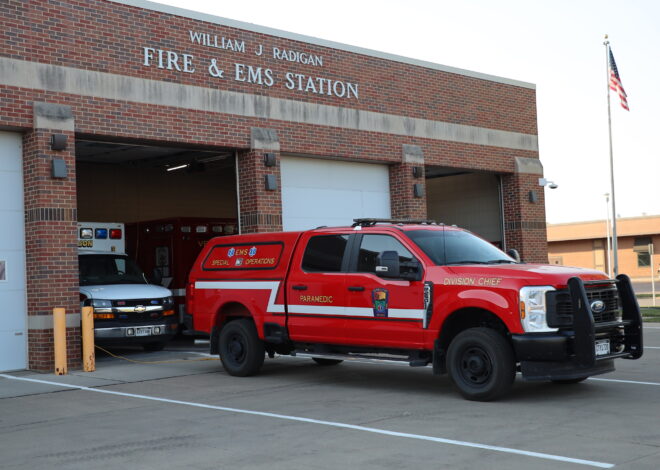The Gun Debate
Teachers and gun violence have taken center stage since the shooting at Sandy Hook Elementary last December.
As teachers around the nation contend with the possibility of armed protection in schools, University of South Dakota education students may find themselves locked and loaded in the classroom.
The passed South Dakota House Bill 1087 regarding the use of firearms in schools across the state has raised concern amongst students and teachers alike, baring the question of whether or not teachers and staff members can be trusted with firearms in the classroom.
The Senate attempted to pass Senate Bill 177 bill which would regulate the authority given to school administrators on the use of firearms in schools.
The bill was killed in the Senate committee by a vote of 5-2 on Tuesday, according to Jack Warner, executive director of the South Dakota Board of Regents.
Amy Oliver, a junior elementary education major, argues that allowing weapons in school would pose greater threats to the safety of their students than intended.
“There are a lot of dangers associated with it, which scares me,” Oliver said. “Where would they be kept? Who could access them? There’s always the possibility of a complete stranger coming in and taking the weapon for themselves.”
Oliver is on track to graduate in the spring of 2014 and plans to teach in her home state of Colorado, a place that gained global attention after the movie theater shooting in Aurora on July 20, 2012.
“It would be wise to have teachers be prepared to deal with those incidents,” she said. “People in general should be more aware of what to do in situations like that. I don’t think teachers should be allowed guns, but they should still know how to handle those kinds of situations.”
Nicholas Tifft, also an elementary education major, agrees that putting something as fragile and lethal as a gun in the hands of teachers could be unreliable, given the stressful working conditions of teaching.
“Across the board it’s very risky to have teachers hold weapons because anyone can have a bad day, especially teachers,” Tifft said. “I would never let myself carry a gun in school.”
According to an article released in the Argus Leader, even teaching staff members find the new bill a serious issue.
“More firearms in schools makes schools even more unsafe,” said Wade Pogany, executive director for Associated School Boards of South Dakota during the bill’s first hearing.
Some USD professors disagree in allowing teachers to make use of firearms in school. Dr. Timothy Schorn, political science professor, feels guns and a school setting do not mix.
“I am not a fan of having additional weapons on campus because I really don’t trust others to be fully trained to handle such things,” Schorn said. “It could provoke students into bringing their own weapons, which would raise more issues.”
On a larger scale, Oliver says having the right to bear firearms in a school greatly affects the students as much as it does the teachers.
More notably in primary education, the students mirror what they see and soak up their surroundings.
On the basis of maturity levels in dealing with weapons, Oliver also feels making weapons available could post a major problem in elementary and middle schools where children are generally unaware of how to react to such things.
The education program, Teach For America, boasts equality for all students in learning, making education more available and valuable to minorities and others who have a difficult time accessing quality education.
The program is very active in the state of South Dakota where reservations occupy a good portion of the population.
These factors, along with location, can greatly influence how weapons in school are dealt with.
“If you go into a school that’s in a middle-class area, generally the students are going to be okay,” Oliver said. “And there is less risk of them trying to find the weapons or utilize them. In contrast, being in a low-income area is a bit concerning where students are used to coming from single family homes that are more likely to be abusive or neglectful.
“They are at more risk to go and find the guns. It changes the dynamic.”
Oliver continued to explain children living on reservations, who are immune to tougher living environments, are more prone to violence as opposed to children coming from stable, middle-class households. Teachers keeping weapons in school for the sake of protection could persuade children on reservations to study the weapons and raise curiosity.
“Cities are worse because you have both sides rubbing against each other,” Oliver said. “Having middle-class students and lower-class students right next to each other in an environment with guns can cause some tension.”
Oliver noted the rise in gun violence across the nation is attributed to events like the Aurora shooting and the Newtown massacre, and with the introduction of bill 1087 it’s vital for students, especially those working towards a career in education, to be well-informed of the dangers that accompany handling weapons in school.
At this point, it does not seem USD is placing any priority on teaching education majors how to deal with such situations, as seen by its own students.
“None of my classes have discussed these issues, but I think it needs to be looked at more carefully in class,” Tifft said.
buy azithromycin online https://cpff.ca/wp-content/languages/new/canadaa/azithromycin.html no prescription
Oliver also finds having education majors more informed on the subject is a smarter choice, primarily in elementary and middle schools.
“I feel that college students are more prepared for situations that involve gun violence as opposed to elementary school students,” Oliver said. “I don’t think having a gun in a college classroom is necessary since older students know how to handle those kinds of issues. However, I don’t think elementary school teachers should carry guns either. They should know how to handle situations like that without using a firearm.”

